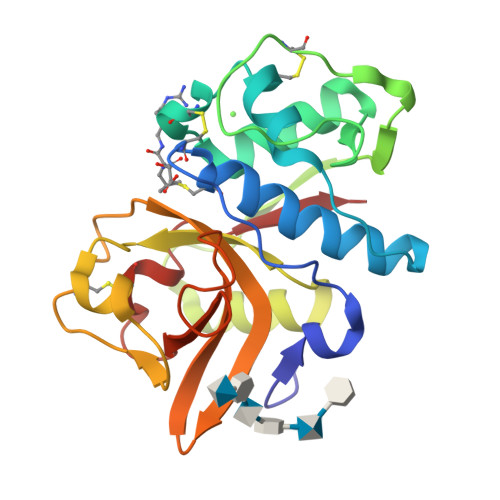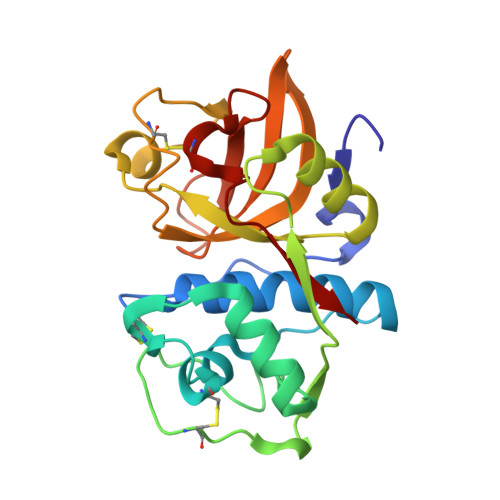The crystal and molecular structures of a cathepsin K:chondroitin sulfate complex.
Li, Z., Kienetz, M., Cherney, M.M., James, M.N., Bromme, D.(2008) J Mol Biology 383: 78-91
- PubMed: 18692071
- DOI: https://doi.org/10.1016/j.jmb.2008.07.038
- Primary Citation of Related Structures:
3C9E - PubMed Abstract:
Cathepsin K is the major collagenolytic enzyme produced by bone-resorbing osteoclasts. We showed earlier that the unique triple-helical collagen-degrading activity of cathepsin K depends on the formation of complexes with bone-or cartilage-resident glycosaminoglycans, such as chondroitin 4-sulfate (C4-S). Here, we describe the crystal structure of a 1:n complex of cathepsin K:C4-S inhibited by E64 at a resolution of 1.8 A. The overall structure reveals an unusual "beads-on-a-string"-like organization. Multiple cathepsin K molecules bind specifically to a single cosine curve-shaped strand of C4-S with each cathepsin K molecule interacting with three disaccharide residues of C4-S. One of the more important sets of interactions comes from a single turn of helix close to the N terminus of the proteinase containing a basic amino acid triplet (Arg8-Lys9-Lys10) that forms multiple hydrogen bonds either to the caboxylate or to the 4-sulfate groups of C4-S. Altogether, the binding sites with C4-S are located in the R-domain of cathepsin K and are distant from its active site. This explains why the general proteolytic activity of cathepsin K is not affected by the binding of chondroitin sulfate. Biochemical analyses of cathepsin K and C4-S mixtures support the presence of a 1:n complex in solution; a dissociation constant, K(d), of about 10 nM was determined for the interaction between cathepsin K and C4-S.
Organizational Affiliation:
Mount Sinai School of Medicine, Department of Human Genetics, New York, NY 10029, USA.



















